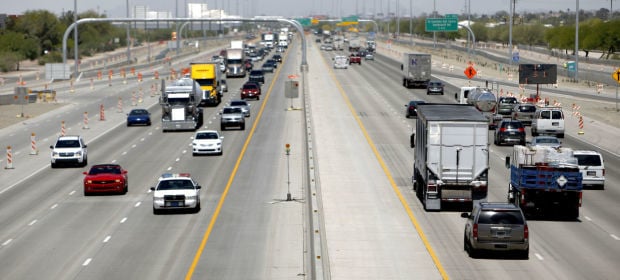PHOENIX — State agencies don’t have to keep highways free of unreasonably dangerous hazards if they simply warn motorists about them, the Arizona Supreme Court ruled Friday.
In a decision one justice said has serious implications for public safety, the majority concluded the Department of Transportation has no legal obligation to upgrade roads, bridges or other structures if they were built to the standards in effect at the time of construction.
The court concluded the fact traffic patterns have changed and speed limits have increased does not require the state to upgrade the roads. All ADOT needs to do, the court concluded, is provide “adequate warning” of the dangers.
Chief Justice Scott Bales criticized the ruling, saying it “effectively replaces the state’s duty to keep its highways reasonably safe with a duty to warn the public that highways have become unreasonably dangerous.”
According to court records, a motorist driving east on I-10 in 2007 on the heavily traveled stretch between Tucson and Phoenix was attempting to pass a truck. The truck moved into her lane, forcing her onto the shoulder. When she attempted to drive back onto the highway she lost control and went across the media and into oncoming traffic.
Her vehicle crashed head-on into a van occupied by Diana and Michael Glazer and their young daughter. The husband was killed and the wife was seriously injured.
Attorneys for ADOT argued they had no liability because a median barrier was not required when the highway was designed and constructed in 1967. ADOT spokesman Tim Tait said there are none on that stretch now.
Justice Ann Scott Timmer, writing for the majority, cited a 1984 law which says the state is not liable for injuries out of design, construction or maintenance of roads “if the plan or design is prepared in conformance with generally accepted engineering or design standards in effect at the time.” And here, Timmer said, the highway in 2007 was as it was in 1967.
Bales, however, said the finding ignores the fact 55,000 vehicles a day is more than triple what was projected in 1997.
“Timmer disagreed, saying “public entities have limited resources to bring all roadways into compliance with current design standards and must prioritize needs.”
However, the high court upheld a $7.8 million verdict against ADOT Friday in the 2007 case because the 1984 law has another provision requiring “if any unreasonably dangerous hazards exists,” governments must post a reasonably adequate warning so motorists can take “suitable precautions.”
And that, Timmer said, was not done in 2007.
The lack of a barrier, coupled with changes in travel since construction, made the median in the area dangerous, as shown by an unusually high number of cross-median accidents in the area.
Timmer said nothing in the 1984 law — or Friday’s ruling — gives state and local agencies reason to ignore problems.





